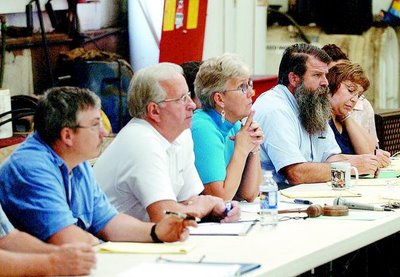
Abandonment
This is part three of a four-part story by Bill Banaszewski about the land surrounding the Finger Lakes and the wildlife and people who inhabited it. While many details are based on research in Livingston, Ontario, Yates and Tompkins counties, the story is representative of the entire hilly landscape of the region.
By 1850 much of the forested green canopy that had covered the Finger Lakes region since prehistoric time had vanished. As the virgin forest disappeared, so did the loggers. They were replaced by farmers, who continued to clear the hillsides until 1880. By then only 25 percent of the lands remained forested, quite a contrast from the 90 percent forest cover that greeted the pioneer settlers nearly a century before.
As the land changed, forest-dwelling wildlife and species that were a threat to the livelihood of farmers became rare to nonexistent. However, species that preferred farmland and open fields, such as bobolinks and bluebirds, benefited from the changing habitat and flourished. Legend is the bluebird was almost as common during the late 1800s as the robin is today.
The early 19th century proved to be a prosperous time for some Finger Lakes farmers. After the Erie Canal opened in 1825, farmers were able to send corn, rye, flax and wheat to many new markets. For a short period of time the area was known as the wheat belt of the nation. Teasel growing, a specialized industry that used the larger thistle for raising the nap of cloth, was prospering near Skaneateles.
As new lands to the west opened, farm competition became fierce and affected everyone. No one was hurt more in the late 1800s than the hillside farmers. It might be said that these farm families enjoyed a simple, uncomplicated life, but it was certainly not an easy one. In fact the romanticism that is often associated with the past bears little resemblance to reality. The physical and spiritual punishment inherent in farming poor soil was accepted by the strong-willed pioneers, but far too often their hopes and aspirations were crushed by uncontrollable forces. Never much above a subsistence level at the best of times, they were constantly battling short growing seasons and shallow, unproductive soil. While glaciers deposited extensive amounts of till in the valleys, very little was deposited on the steep, higher elevations. Layers of topsoil there were thin. Stripped of trees and without crop rotation, the hillsides were exposed to sheet erosion, and within half a century any topsoil that was present had vanished. The hardpan that was left was useless for farming.
While circumstances varied throughout the Finger Lakes, the late 1800s was the time when the destiny of the hillside farmers was irreversibly sealed and doomed. Unable to afford new farming machinery that was changing the economic basis of agriculture, the now elderly farmers were forced from the hillsides and into towns. Younger members of the farm families had little interest in the dawn-to-dusk, seven-day-a-week, backbreaking work that would barely ensure their survival. With little interest in returning to the land, they too left for better work in town or to engage in flatland farming.
Between 1880 and 1925, one quarter of all farms in south central New York were abandoned. Families who came to the Finger Lakes’ hillsides full of expectations packed their meager belongings in their wagons and, for one last time, closed the doors of the farmhouses they had spent months building and transforming into homes. Much of the farm equipment and other remnants of their daily life were left in the fields where they were last used, resting in silent companionship with the illusion of their defeated land users. In essence the farms were left to rot.
Nature took precious little time in starting the process of breaking down man’s temporal effects. The forces of sun, wind, rain, snow, vegetation and wildlife soon asserted their collective power. Left undisturbed, the land follows a process of natural succession. Simply stated, it is nature’s way of repairing and reclaiming disturbances to the land. Natural succession proceeds in stages. In no time, grasses, vines and shrubs covered the abandoned farm machinery, fences, barns and eventually the homes of the pioneer farmers. Once again nature, the original change agent, was in control of the Finger Lakes landscape.
Farmland to Forest is adapted from a multimedia presentation coproduced by Bill Banaszewski and his friend and colleague, the late John Meuser, while they were professors at Finger Lakes Community College. Watch for Part IV, the conclusion of our year-long series, in the Winter Issue of Life in the Finger Lakes.
Click here to read Part I and Part II of this series.
Labels: Ecology, New York






